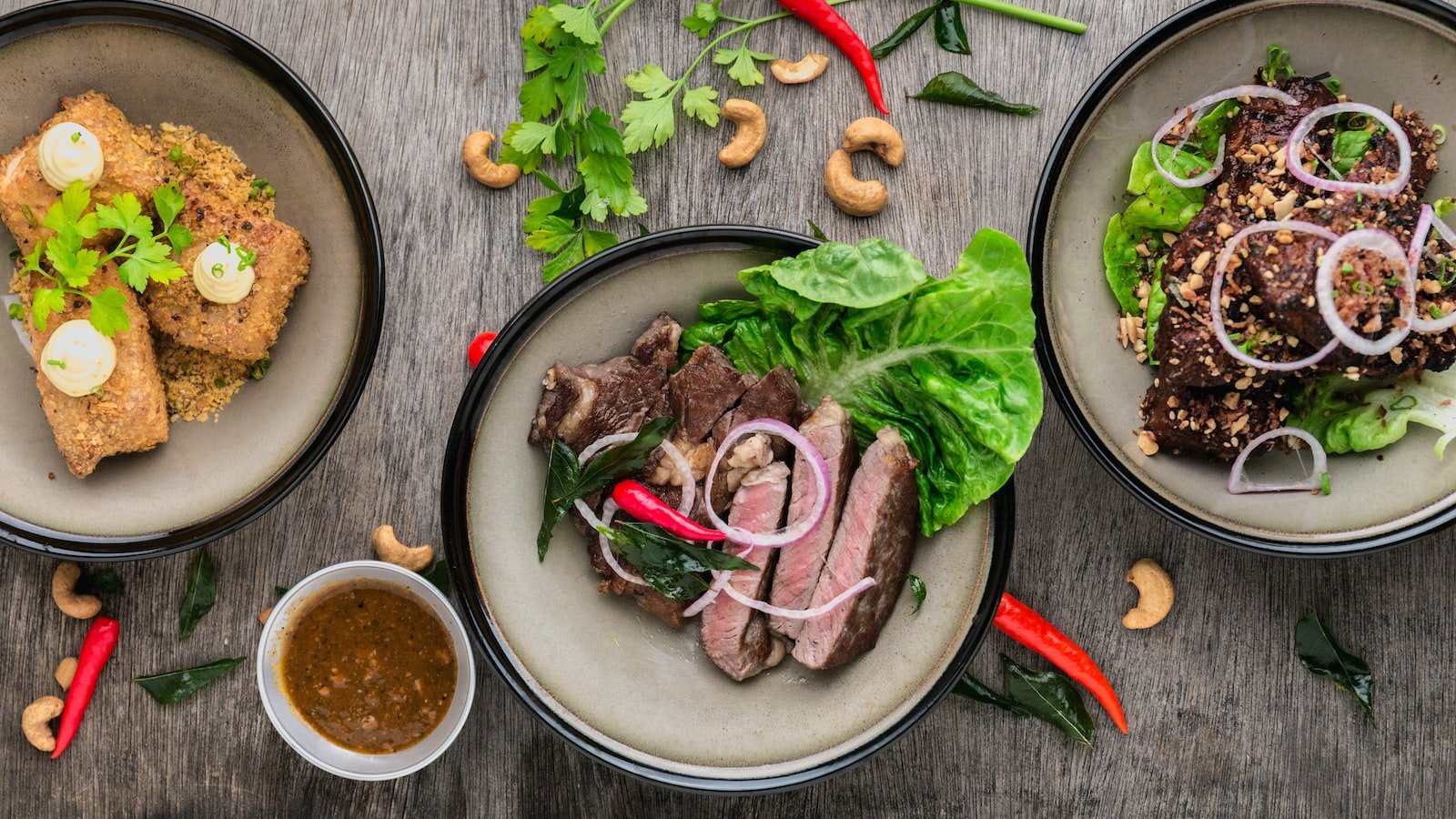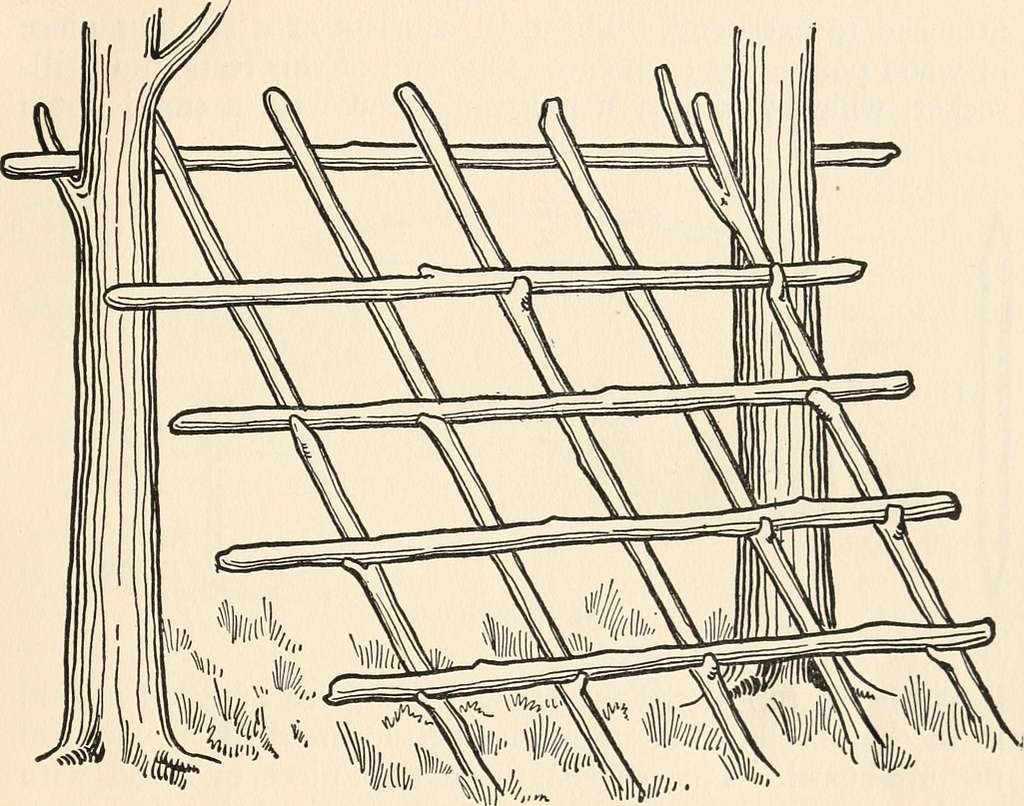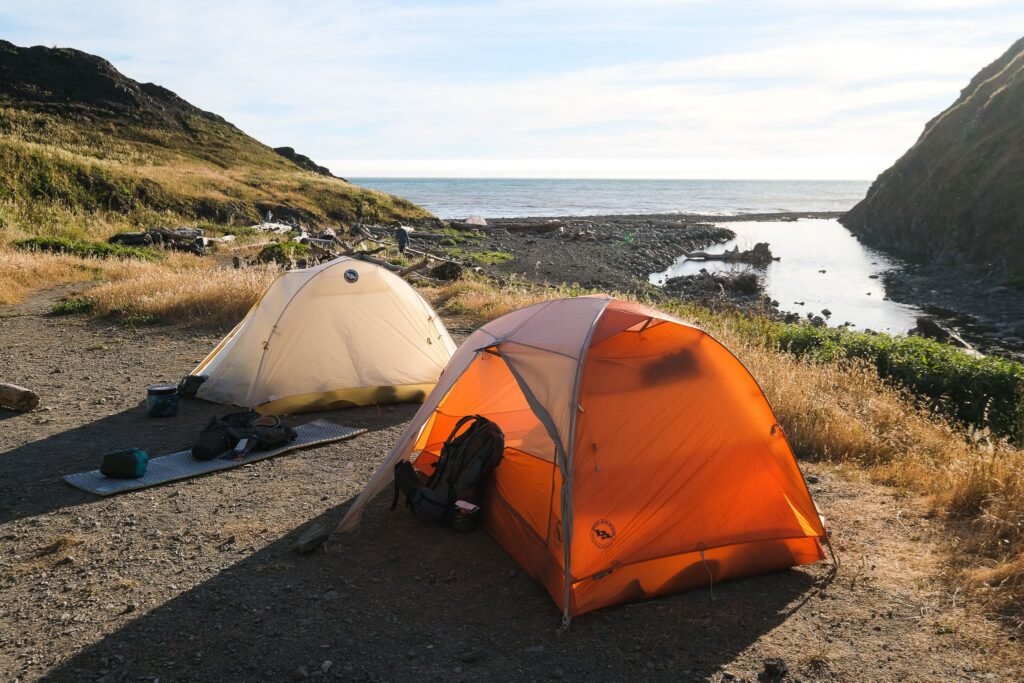Now Reading: How to Build a Wilderness Pantry: Food Preservation Tips
-
01
How to Build a Wilderness Pantry: Food Preservation Tips

How to Build a Wilderness Pantry: Food Preservation Tips
Step into the untamed wilds, where the air is pure and the rhythm of nature reigns supreme. Imagine embarking on a thrilling foray into the unknown, gathering the bounties that Mother Earth so generously bestows upon those who seek sustenance off the beaten path. In this uncharted wilderness, where modern conveniences are but a distant memory, the notion of preserving food may seem like an impossible undertaking. Yet fear not, intrepid adventurers, for we bring you a guide that will unlock the secrets of building a wilderness pantry. Join us as we delve into the art of food preservation, providing essential tips to ensure your survival and savor the authenticity of this unspoiled world. So pack your curiosity and sharpen your senses, as we embark on a journey to master the skills of a wilderness pantry.
Table of Contents
- Preparing for the Wilderness: Assessing Your Needs and Prioritizing
- Selecting the Right Food Preservation Methods for the Wild
- Mastering Dehydration Techniques: Drying Food for Longevity
- Canning and Fermentation: Preserving Nutrients in the Backcountry
- Exploring Other Preservation Techniques: Smoking and Salting
- Q&A
- The Way Forward

Preparing for the Wilderness: Assessing Your Needs and Prioritizing
Assessing Your Needs and Prioritizing
Before embarking on an adventure in the wilderness, it’s crucial to assess your needs and prioritize accordingly. Consider the following factors to ensure a safe and memorable experience:
- Climate and Terrain: Research the climate and terrain of the area you’ll be exploring. Is it a hot and dry desert or a snowy mountain range? Knowing the conditions will help you gather the necessary gear such as appropriate clothing, footwear, and shelter.
- Duration of the Trip: How long will your wilderness expedition last? Determine the duration and plan accordingly. Longer trips may demand additional supplies such as more food, water filtration systems, and navigation tools.
- Personal Health and Ability: Consider your physical fitness and any health conditions before venturing into the wild. Depending on your abilities, you may need to adjust the difficulty level of your route or seek assistance from experienced guides.
Once you’ve assessed your needs, it’s time to prioritize. Remember, safety should always be at the top of your list. Key priorities could include:
- Emergency Preparedness: Pack essential first aid supplies, emergency communication devices, and navigation tools to ensure you’re equipped to handle unexpected situations.
- Water and Food: Prioritize access to clean water sources and carry ample food supplies to sustain yourself throughout the trip. Research water purification methods and pack lightweight, high-energy snacks that are easy to carry.
- Shelter and Sleeping: Depending on the duration and weather conditions, prioritize appropriate shelter options like tents or hammocks and consider the comfort of your sleeping arrangements.
Remember, by assessing your needs and priorities, you’ll be better prepared to face the challenges that come with wilderness exploration.

Selecting the Right Food Preservation Methods for the Wild
When it comes to preserving food in the wild, it is vital to choose the right methods to ensure its quality and longevity. Here are some key considerations to help you make the best choices for your wilderness culinary adventures:
- Dehydration: This method involves removing moisture from food to prevent spoilage. Dehydrated foods are lightweight, take up less space, and can be rehydrated easily. It is ideal for preserving fruits, vegetables, and meats. Plus, it retains most of the nutritional value and flavor.
- Smoking: Smoking food not only imparts a unique and delicious flavor but also acts as a natural preservative. The smoke creates a protective barrier and deters insects. This technique is commonly used for fish, jerky, and certain types of cheese.
- Canning: Canning involves sealing food in airtight containers to prevent bacteria growth. It’s perfect for preserving soups, stews, and sauces. However, keep in mind that cans can be heavy and can take up significant space in your backpack.
Remember, the right preservation method will depend on factors such as the food you have, the duration of your trip, and the available resources. So, choose wisely and savor the taste of nature while ensuring the longevity of your provisions.

Mastering Dehydration Techniques: Drying Food for Longevity
When it comes to preserving food, one technique that stands the test of time is dehydration. Not only does it enhance the shelf life of food, but it also concentrates the flavors, making it a popular method for creating tasty, nutritious snacks.
Mastering the art of dehydration involves understanding various techniques used for drying food. Here are some essential tips to get you started:
- Choose the right food: Some foods are better suited for dehydration than others. Fruits, vegetables, herbs, and even meats can all be dehydrated, but it’s essential to pick fresh, ripe produce to ensure the best results.
- Prepare for success: Before you begin, ensure your equipment is in top-notch condition. Clean your dehydrator thoroughly, and if using an oven, check that the temperature settings are accurate. Proper preparation ensures even and efficient drying.
- Cut and slice: To speed up the drying process and promote even dehydration, slice your food into uniform pieces. This allows for consistent drying and prevents some pieces from becoming overly dry while others are still moist.
- Time and temperature: Each food has its own ideal drying time and temperature. Pay attention to recommended guidelines, as over-drying can compromise the quality, texture, and taste of your food.
- Storage considerations: Once your food is perfectly dehydrated, it’s crucial to store it properly to maintain its longevity. Keep it in airtight containers or vacuum-sealed bags, away from moisture and sunlight.
By mastering dehydration techniques, you unlock a world of delicious and healthy snacks that can be enjoyed for months to come. Experiment with different combinations of flavors, spices, and textures to create your own unique dehydrated culinary delights!
Canning and Fermentation: Preserving Nutrients in the Backcountry
When venturing into the great outdoors, it’s essential to pack nutrient-rich meals that can sustain you throughout your journey. Canning and fermentation are two incredible methods that not only ensure the preservation of your food but also lock in its valuable nutrients. These techniques have been utilized for centuries and continue to be lifesavers for backcountry explorers.
Canning: This method involves sealing food in airtight containers, preventing any spoilage or bacterial growth. The process typically requires heat to kill off harmful microorganisms and preserve the food for an extended period. Canned foods, such as vegetables, fruits, and even meats, retain their nutritional value and add variety to your backcountry meals.
Fermentation: Fermented foods offer a range of health benefits, making them an excellent choice for outdoor enthusiasts. It’s a natural preservation method that uses the conversion of sugars by bacteria or yeasts to create a tangy and flavorful end product. Think of tangy sauerkraut, pickles, or kimchi that not only provide a burst of taste but also introduce beneficial probiotics to your diet. Packing a jar of fermented goodies ensures that your gut remains happy during your backcountry adventure.
Exploring Other Preservation Techniques: Smoking and Salting
When it comes to preserving food, smoking and salting are two traditional techniques that have been used for centuries. These methods not only help extend the shelf life of various food items but also impart unique flavors that can enhance the overall taste. Let’s delve into these age-old preservation techniques:
Smoking:
- Smoking is a method that involves exposing food to the smoke of burning woodchips or sawdust.
- This process not only dries out the food but also infuses it with rich, smoky flavors.
- Commonly used for preserving meats, such as bacon, ham, and fish, smoking also adds depth to cheeses, vegetables, and even fruits.
- The two main types of smoking methods are cold smoking and hot smoking.
- Cold smoking is typically done at temperatures below 100°F (38°C) and is more suitable for items that require longer smoking times, like salmon or cheese.
- Hot smoking, on the other hand, involves higher temperatures, reaching around 225°F (107°C), and is perfect for quick-cooking items such as sausages or poultry.
Salting:
- A centuries-old preservation technique, salting involves coating food with salt, usually in the form of a dry cure, brine, or a combination of both.
- The salt acts as a natural preservative by drawing out moisture from the food, creating an inhospitable environment for bacteria to thrive.
- This method has been extensively used for preserving meats, such as pork, beef, and fish, as well as olives and certain vegetables.
- Salting can also enhance the flavor and texture of the preserved items, with the added benefit of extending their shelf life.
So, if you are looking to explore alternative preservation techniques, consider the enticing flavors and time-honored methods of smoking and salting. These ancient practices not only allow you to create delicious, preserved delicacies but also offer a glimpse into the culinary traditions of yesteryears.
Q&A
Q: What is a wilderness pantry?
A: A wilderness pantry is a collection of preserved and non-perishable foods that can be stocked and utilized in outdoor or remote settings.
Q: Why is building a wilderness pantry important?
A: Having a well-stocked wilderness pantry ensures that you have a supply of nutritious and satisfying food options while exploring the great outdoors, especially in areas where fresh food is scarce or difficult to find.
Q: What are some popular food preservation methods for building a wilderness pantry?
A: Popular food preservation methods for a wilderness pantry include dehydration, canning, smoking, pickling, and vacuum-sealing. These methods help extend the shelf life of various foods without refrigeration.
Q: How can I dehydrate food for my wilderness pantry?
A: To dehydrate food, slice it into thin, even pieces and spread them out on a dehydrator tray or baking sheet. Place the tray in an oven set at a low temperature or use a food dehydrator to slowly dry the food until it reaches the desired texture.
Q: What kind of foods can be canned for a wilderness pantry?
A: Canning is a versatile food preservation method suitable for a wilderness pantry. Common canned foods include fruits, vegetables, meats, and soups, as they can be safely stored for extended periods without refrigeration.
Q: What are the benefits of smoking food for a wilderness pantry?
A: Smoking food not only enhances its flavor, but it also acts as a preservation method by slowing down the growth of bacteria. Smoked meats, fish, and even cheeses can add a delightful and long-lasting addition to your wilderness pantry.
Q: How can I pickle food for long-term storage in a wilderness pantry?
A: Pickling involves soaking food items, typically fruits or vegetables, in a mixture of vinegar, salt, spices, and sometimes sugar. The acidity of the pickle solution creates an environment inhibiting bacterial growth and helps increase the food’s shelf life.
Q: Is vacuum-sealing a viable method for wilderness pantry food preservation?
A: Vacuum-sealing is a highly effective method for preserving a wide range of foods in a wilderness pantry. By removing air and sealing food in airtight bags, it helps prevent spoilage, maintaining freshness and extending the shelf life of many items.
Q: Are there any limitations to building a wilderness pantry?
A: While building a wilderness pantry can be convenient and practical, it’s important to consider factors like weight, storage space, and the availability of clean water for rehydration when planning and packing your preserved food supplies.
The Way Forward
As we conclude this wild culinary expedition, we hope you’ve gleaned some invaluable insights on how to build your very own wilderness pantry. From curious foragers to seasoned adventurers, learning the art of food preservation equips you with the magic of transforming transient ingredients into magnificent sustenance.
While the wilderness may seem untamed, these preservation techniques guide you towards taming the wild through the sheer power of creativity. As you become intimately attuned to nature’s gifts, harnessing the elements of fire, sun, air, and time, you embark on a journey of preserving flavors, traditions, and memories.
It is here, in the depths of the pantry, where the vibrant colors and aromas of nature persevere, preserving moments amidst the passing seasons. Every jar filled with pickled treasures or jarred jams holds the essence of your wilderness encounters, ready to be shared at a flickering campfire or savored during a quiet moment in the great outdoors.
So, venture forth, my fellow wilderness enthusiasts, and embrace the age-old wisdom of food preservation. Discover the enchantment hidden within jars of dried herbs, the delight of culinary souvenirs, and the sustenance that will fuel your next daring escapade. Let your pantry be a testament to your wanderlust, a shrine to the flavors of nature that you’ve harnessed and respected.
And as you embark on your wilderness journeys, remember to carry more than just nourishment. Take with you the stories and memories, the taste of wild berries on your lips, the warmth of smoked meats, and the comfort of dried fruits. For in building a wilderness pantry, you acquire more than sustenance – you gain a treasure trove of experiences, an ode to the untamed, and a testament to your resourcefulness.
So, gather your ingredients, wield those preservation techniques, and unlock the formidable power of the wilderness pantry. May it sustain both body and soul, carrying you deeper into the heart of nature and nourishing your unwavering spirit for adventure. As you venture forth, may your pantry be forever filled with nature’s abundance, ready to ignite delightful memories and sustain you in every uncharted expedition that lies ahead.
As an affiliate, my content may feature links to products I personally use and recommend. By taking action, like subscribing or making a purchase, you’ll be supporting my work and fueling my taco cravings at the same time. Win-win, right?
Want to read more? Check out our Affiliate Disclosure page.





